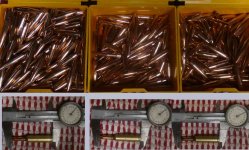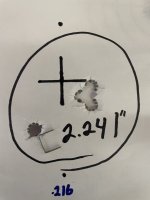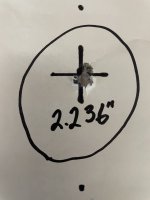I understand and agree with most of that.
I read somewhere that Berger packages in-line, a box will come off the same machine, the next box maybe another run.
One of the 100 bullet boxes were almost all long, one box almost all short, working through the 1000 bullet box almost all measure in the middle.
Maybe the middle will be for 600yd practice and matches. I could open up the length range of the middle group and capture a higher percentage in that group.
The part I question is that jump doesn't matter (much).
Guess all those that set for a particular jump are missing the boat.
At any rate, my precision reloading hasn't been all that precise.
I was setting the seating stem for an OAL based on my Touch dummy. That based my reloads to OAL. Not good.
From now on I'll base off of CBTO of the dummy (one for each barrel). My old barrel and the wife's somewhat new barrel have quite a bit of different in touch length.
I will measure some of the long and short bullets with the seating stem and see how those lengths come out.
I still think the pointy end (where the seating stem hits) isn't as consistent as many believe.
Issue might be somewhat self sorting. The long bullet did give a longer CBTO than a short one (sample size of one each

)






